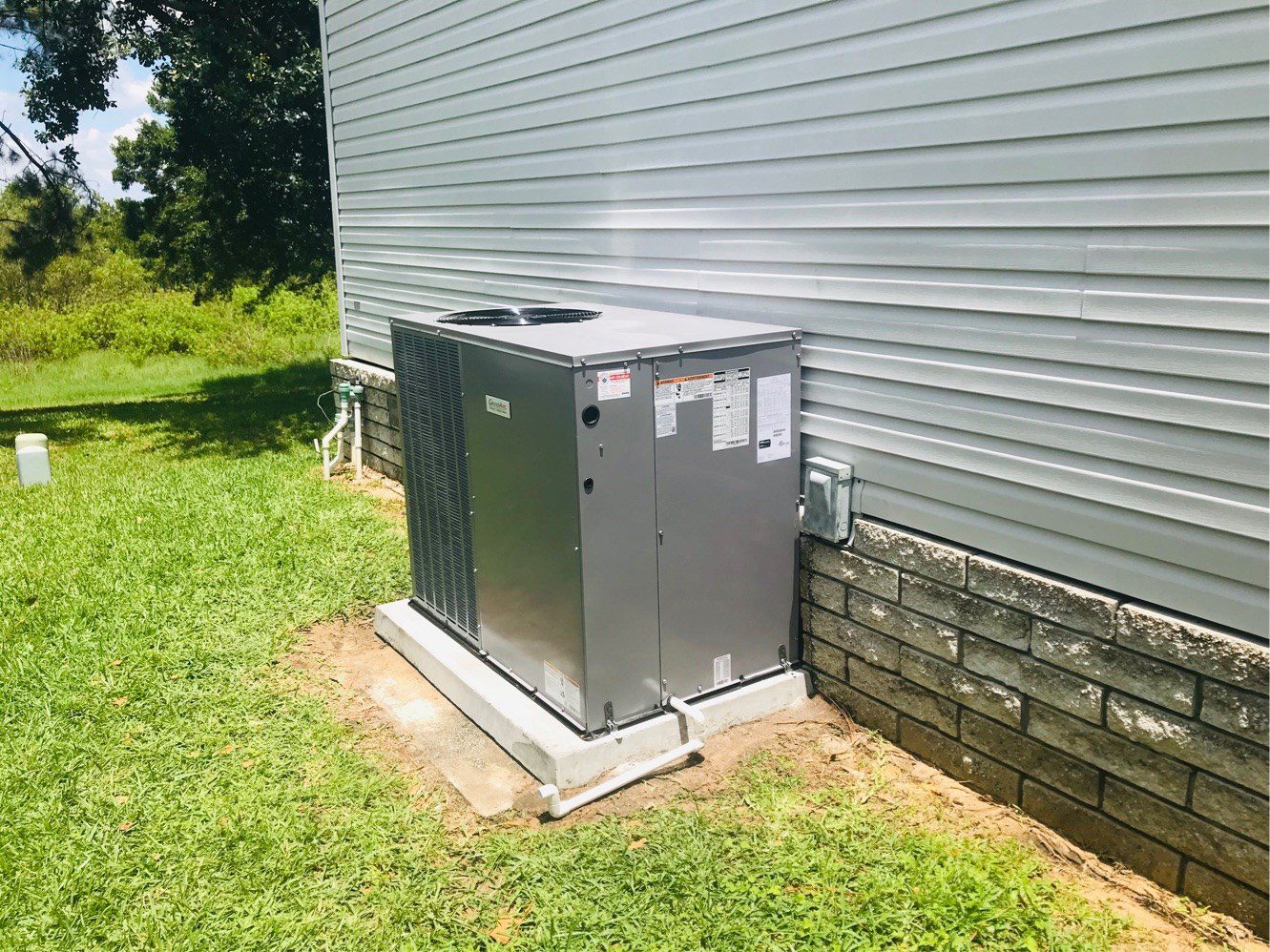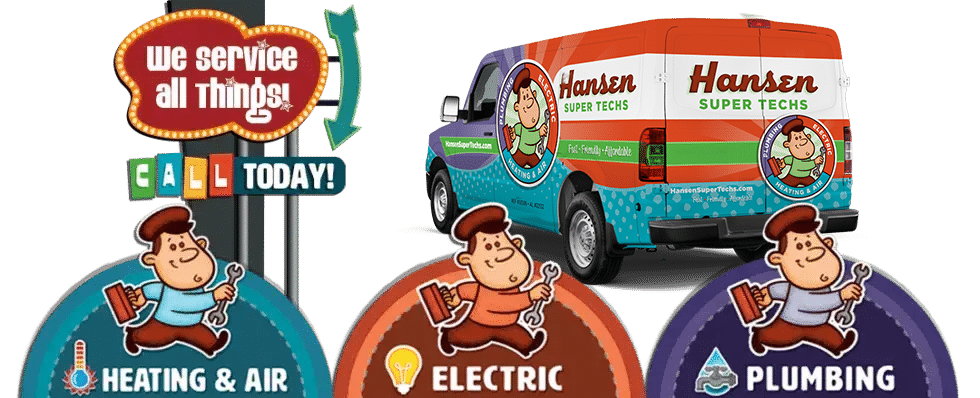How Does Central Air Conditioning Work?

The central air conditioning unit cools air from a single point and distributes it to all rooms in the house. An AC doesn’t actually create cold air. Instead, it removes heat and moisture from the indoor air, expels that outside, and returns cooler air. Although most households depend on the AC to gain relief from the summer heat, some people don’t know the various components in the unit and how they work. Having a basic knowledge of the air conditioning process will help you determine if your AC is working as efficiently as it should. You will also learn to quickly identify a problem and seek professional help soon enough to prevent extensive damage. Here are the steps involved in the air conditioning process.
1. The Thermostat Signals the AC to Kick On
A thermostat is the control part of your AC. Its primary role is to read the indoor air temperature and signal the AC to kick on or shut off. There are various types of thermostats. The electronic thermostat uses a sensor to determine if the house is at the right temperature. This type also has improved features that enable you to preset your home temperature for different parts of the day.
The older thermostat models have a bi-metal coil or strip. When the temperature increases, the coil expands, forming a bridge within the electrical circuit attached to the cooling system, kick-starting the AC. Once the house attains the desired temperature, the sensor will signal the AC to stop cooling. In the older models, the metal strip contracts, cutting the electric current flow.
You need to constantly monitor the thermostat. If it fails, your AC won’t work as expected. A faulty thermostat may signal your unit to run continuously, which strains the air conditioner and shortens its lifespan.
2. A Blower Fan Draws Warm Indoor Air
The air handler then draws warm air from all the rooms in the house and pushes it to the return duct. Air filters in the duct trap dust, pollen, pet dander and other particles from your indoor air. When neglected, such debris may accumulate on the filters, limiting airflow, which lowers the efficiency of your unit. Therefore, you should change or clean the air filters once in three months. If you live in a very dusty region or have a heavily shedding pet, you should do it every month. The blower fan is also responsible for distributing cooled air throughout the house.
3. The Evaporator Coil Draws Heat and Humidity From the Air
The warm indoor air proceeds to the evaporation coil, an indoor component located near the blower. This part works with the help of the refrigerant, also known as coolant. The refrigerant runs through a closed loop, and its primary role is to absorb and expel the heat drawn from the indoor air.
The evaporator coil’s copper tubes contain depressurized liquid refrigerant. When the warm indoor air blows over the cold evaporator coils, they absorb the heat following the principle that heat naturally flows from hot to cold regions. After absorbing the latent heat, the coolant changes from liquid to gas. The cold evaporator coils also cause moisture from the indoor air to condense into water. Next, the humidity collected drips into a condensate pan underneath and flows outside. Now, the AC will blow back chilled, purified, and dehumidified air into the house.
Have a professional inspect your unit often for refrigerant leaks. If the coolant level drops, your AC will draw out less heat, so it might have to work extra hard to maintain a comfortable temperature. The technician should also clean the evaporator coil regularly to ensure that it works optimally.
4. The Refrigerant Flows Into the Compressor
Once the hot, low-pressure gas refrigerant leaves the evaporator coil, it flows into the compressor. This is a large electric pump located outdoors. Its central role is to press the coolant tightly together to raise its temperature and facilitate heat transfer. This works by the combined gas law, which states that an increase in pressure raises the temperature. Remember that heat will always flow from hot to cold spaces, so the refrigerant needs to be hotter than the outside air.
The compressor is one of the most complex parts of the AC. If you notice a problem, call a professional to advise you on the best possible course of action. More often than not, when the compressor fails, you might have to replace the whole unit.
5. The Condenser Coil Gets Rid of the Heat Drawn From the Indoor Air
The condenser coil outdoors will then receive the hot, pressurized coolant. In this compartment, there is a fan that blows cooler outdoor air over the coils. Hot air from the refrigerant will thus flow outside, and this is how the unit expels all the heat drawn from the indoor air. From here, the refrigerant changes its state from a gas into a liquid again and flows into the expansion valve.
The best way to maintain an AC condenser is to clear all debris near the outdoor unit. Cut down tall grass, trim low-hanging branches and uproot plants growing nearby. In short, eliminate anything that could obstruct airflow. Once in a while, clean the coils using commercial coil cleaner, and straighten the fins to improve your unit’s efficiency.
6. The Coolant Then Goes Through the Expansion Valve
When the coolant leaves the condenser coils, it isn’t cool enough to flow into the evaporator coils, although it has already expelled the heat. It must go through the expansion valve that depressurizes the liquid refrigerant, lowering its temperature further. Again, using the combined gas law, when pressure decreases, so does the temperature. At this stage, the coolant changes its state from gas to liquid. The expansion valve also regulates the level of refrigerant that flows into the evaporator coils.
7. The Cycle Repeats
After dispelling all the heat, the coolant will now flow back into the evaporator coil, and the cooling cycle starts again. The unit will continue to run until the house attains the set temperature, and the thermostat will then signal the AC to shut off.
If Your AC Has Some Issues, Ask for Help
At some point, a technician may need to explain a problem within your air conditioner to you and describe how to fix it. If you don’t understand how the AC works, this might be a bit hard to comprehend, so it’s good that you learn some of the basics. You should also keep up with your cooling system’s maintenance. During tune-ups, a technician will lubricate the parts, check the electrical connections, and fix any minor issues before they worsen. A well-maintained AC improves indoor air quality, lowers utility bills, and promotes a more secure home. Such a unit will also require fewer repairs and serve you longer.
Regardless of the professional attention your AC needs, you should request it from Hansen Super Techs. We specialize in cooling, heating, and indoor air quality equipment installation, repair, and tune-ups. Our company also provides commercial HVAC, generators, and electrical and plumbing services to Mobile, Baldwin, and the Mississippi Gulf Coast. We’re here to assist you, so call us today.


